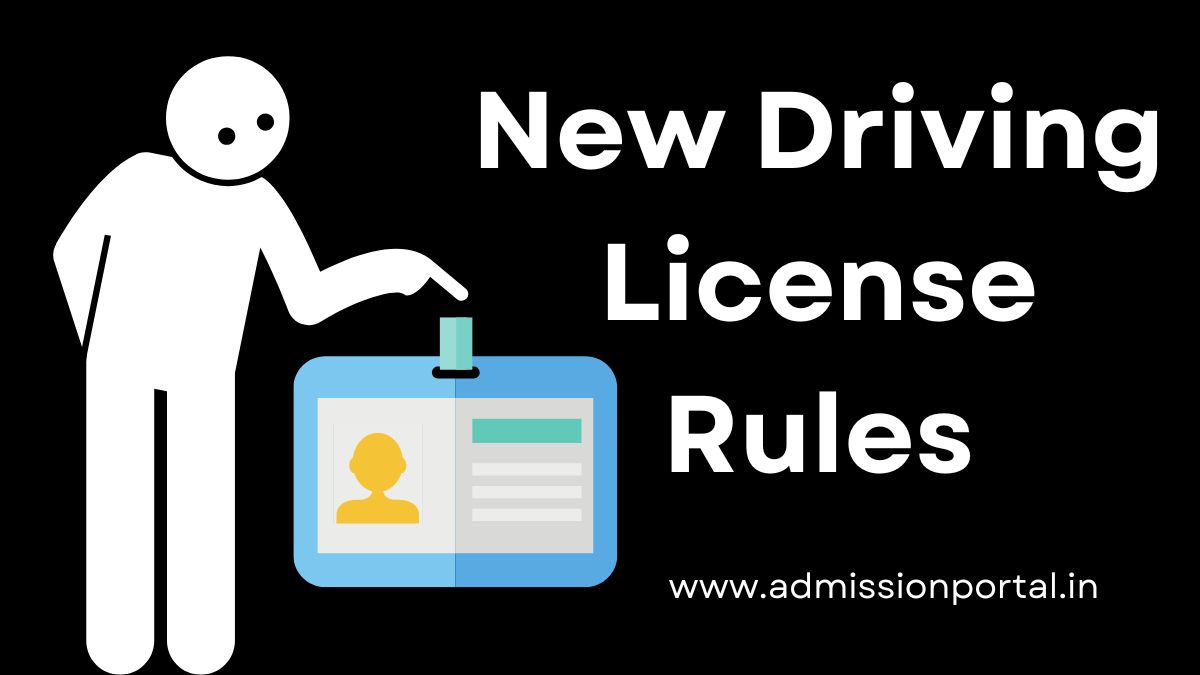New Driving License Rules 2024: Changes & Private Testing Options
Beginning June 1, 2024, new regulations will be implemented. Individuals will have the option to take driving tests at private driving schools, which can now issue certifications confirming that the students they trained are qualified to obtain driver’s licenses, eliminating the necessity to visit the government Regional Transport Office (RTO).
New Driving License Rules 2024: Starting from June 1, a set of comprehensive new driving license rules will be introduced in India, designed to significantly modernize and streamline the entire licensing process. The Ministry of Road Transport and Highways (MoRTH) has put these regulations in place with the primary goal of reducing bureaucratic hurdles that often complicate obtaining a license.
These changes are not just administrative; they also aim to promote better-trained and more competent drivers on Indian roads, fostering a culture of road safety and responsibility. As a result, it is essential for all aspiring drivers and vehicle owners to be well-informed about these new rules and how they may impact the way licenses are issued and renewed.
Obtaining a driver’s license in India has traditionally been a frustrating and lengthy ordeal, often demanding numerous trips to bureaucratic offices and a mountain of paperwork. This complicated framework has unfortunately paved the way for corruption and unwarranted delays, ultimately compromising road safety nationwide.
On a brighter note, the Ministry of Road Transport and Highways has recently unveiled substantial reforms to the driving license regulations, which are scheduled to be implemented on June 1, 2024. These new initiatives are designed to simplify and enhance the licensing process, making it more effective and user-friendly for the average citizen. Let’s delve into the main features of these updated rules.
New Driving License Rules 2024 PDF
Driving tests at Private Schools: Passing the exam at these approved institutions will lead to the award of a certificate, allowing individuals to apply for a license without needing to undergo additional testing at the RTO. The government will issue certificates to designated private driving schools, empowering them to perform these driving assessments. Nonetheless, candidates who do not possess a certificate from an accredited school will still need to complete the test at an RTO.
Stricter Penalties: The recently implemented regulations impose tougher consequences for operating a vehicle without a legitimate license, with fines soaring to ₹2,000. In the case of underage drivers, the repercussions are even harsher, featuring a hefty ₹25,000 fine and possible repercussions for the parents, along with the revocation of the vehicle’s registration certificate.
Eco-friendly Initiatives: The Ministry is rolling out sustainable initiatives designed to cut down on vehicle emissions and encourage the use of electric vehicles (EVs). This plan encompasses the retirement of 9,000 aging government cars and the enhancement of emission regulations for remaining vehicles, all as part of a comprehensive strategy to tackle environmental issues.
Simplified Application Process: The process of obtaining a driver’s license hasn’t seen significant changes, but the documentation needed has been made more straightforward.
Revised Fee Structure of License 2024
The Ministry has revealed an updated fee schedule for different categories of licenses, set to take effect on June 1, 2024. The adjusted fees are listed as follows:
| Type of License | Revised Fees |
| Learner’s licence | Rs.200 |
| Learner’s license renewal | Rs.200 |
| International licence | Rs.1,000 |
| Permanent licence | Rs.200 |
| Permanent license renewal | Rs.200 |
| Issue of a renewed driver’s license | Rs.200 |
How to apply for a license online?
Securing a driving license has been simplified thanks to a new online service. Here’s a guide to help you navigate the application process digitally.
Online mode:
Step 1: Go to https://sarathi.parivahan.gov.in/.
Step 2: Choose your relevant state.
Step 3: From the “Driving Licence” menu, select “New Driving Licence.”
Step 4: Input your “Learning Licence Number” along with your “Date of Birth” to continue.
Step 5: Complete the application form.
Step 6: Click the next button to advance.
Step 7: On your appointed date, go to the RTO with your original documents and payment receipt.
Offline mode:
You can access the form by visiting the official website of the state transport department or simply head to the nearest Regional Transport Office (RTO) to get Form 4 directly. Complete the application and gather necessary documents, such as proof of age and address, to submit at your local RTO. Don’t forget to pay the application fee. Booking a slot for the Driving Licence is optional. If you choose to, take the driving test at the RTO, and upon passing, you will receive your driving licence.
Eligibility Criteria for the Driving Licence in India
| Vehicle Type | Eligibility |
| Cars & Motorcycles with Gear | Minimum 18 years old. Should be aware of traffic rules & regulations. Must have valid age proof & address proof documents. |
| Motorcycles without Gear (Engine capacity up to 50cc) | Minimum 16 years old. Should have the consent of his guardian or parents. Must be aware of traffic rules & regulations. Must have valid age proof & address proof documents. |
| Heavy Commercial Vehicles | Should have cleared the 8th std. Should be above the age of 18 (20 years in some states) Should be trained from any govt or state-affiliated training school. |
The updated regulations for obtaining a driving license are designed to simplify the procedure, minimize red tape, and encourage well-trained drivers on the streets of India. By tapping into the knowledge offered by private driving schools and implementing tougher penalties, the government aims to enhance road safety while making the experience more user-friendly for the public.

